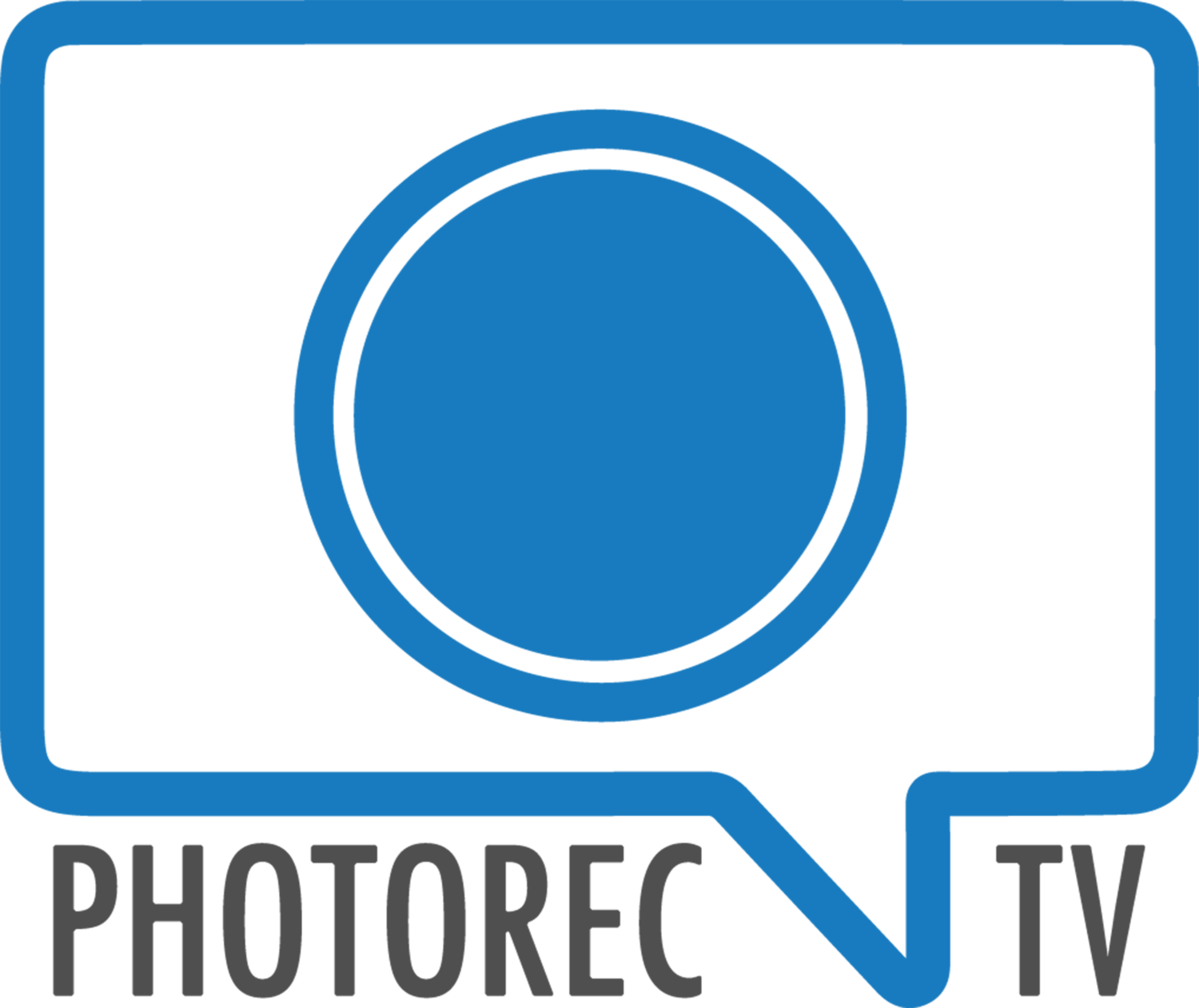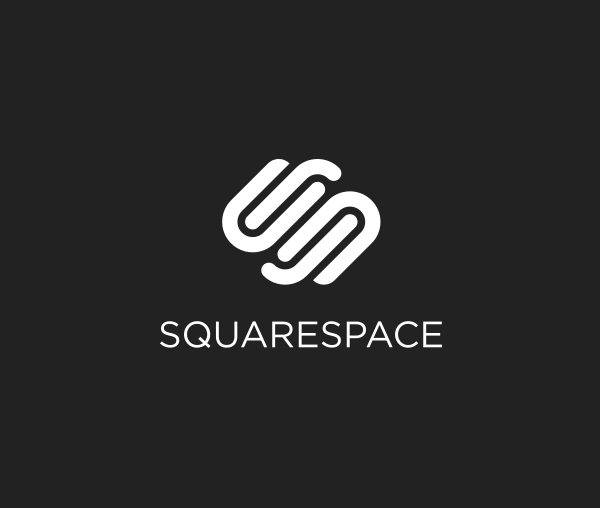Polaroid Pop: Instant Prints with a Digital Twist
/ The classic Polaroid photos of the past have returned with the Polaroid Pop. A 20MP digital camera with 1080P video and an instant mobile printer. Including a 3.97-inch touchscreen with the option to fix photos and use filters before printing. The ZINK printer like the Polaroid Snap uses heat to activate ink on the prints making your standard looking Polaroid in under a minute.As a bonus, it also connects via WiFi or Bluetooth to act as a mobile printer for your smartphone. If you wanted, technically using your DSLR's mobile connection you could print from your camera to this one on the go!The Polaroid Pop will be available around Christmas time in a variety of colors for $200, 10 Zink prints will be $10.
The classic Polaroid photos of the past have returned with the Polaroid Pop. A 20MP digital camera with 1080P video and an instant mobile printer. Including a 3.97-inch touchscreen with the option to fix photos and use filters before printing. The ZINK printer like the Polaroid Snap uses heat to activate ink on the prints making your standard looking Polaroid in under a minute.As a bonus, it also connects via WiFi or Bluetooth to act as a mobile printer for your smartphone. If you wanted, technically using your DSLR's mobile connection you could print from your camera to this one on the go!The Polaroid Pop will be available around Christmas time in a variety of colors for $200, 10 Zink prints will be $10.



Press Release:
Polaroid Introduces the New Polaroid Pop Instant Digital Camera andPolaroid Hoop Wireless Home Camera
On Display at IFA 2017, Polaroid’s Newest Innovations Offer a Modern Take on the PolaroidInstant Digital Camera and Peace-of-Mind for Simplified Home Security
NEW YORK, August 30, 2017 – The Polaroid brand today announced the release of its newestinnovations in photo and home security taking over the holiday season - the Polaroid Popinstant digital camera and Polaroid Hoop wireless home camera. The Polaroid Pop combines asleek, modern design and digital technology with 3.5x4.25” border prints. The Polaroid Hoophome security camera stays true to the Polaroid brand DNA elements, including simplicity,elegant design and the mission to make new and exciting technologies accessible to theeveryday consumer.
“The Polaroid Pop instant digital camera and Polaroid Hoop home security camera initiallydebuted at CES 2017 to much fanfare,” said Scott W. Hardy, President and CEO of Polaroid.“We’re excited to have these products on display at IFA and showcase them to the Europeanmarket. For 80 years, Polaroid has been committed to providing consumers with the latestimaging technology that enables them to easily share their lives. The Polaroid Pop and PolaroidHoop offer modern takes on this idea for every aspect of consumers’ lives.”
Polaroid Pop Instant Digital CameraAs the all-in-one solution for capturing and sharing images on-the-go, the Polaroid Pop instantdigital camera enables users to shoot and instantly print full color photos as 3.5x4.25” Polaroidborder prints. Edit and enhance photos before printing with creative filters, digital stickers and adraw feature that gives the ability to write or draw at the bottom of the photo. The Polaroid Popquickly and easily connects to a mobile device using Wi-Fi or Bluetooth, allowing users to savephotos taken with the camera as well as print photos saved on a mobile device.
The Polaroid Pop instant digital camera will have a MSRP of $199.99; a 10-pack paper will havea MSRP of $9.99. Additional features include:
● MicroSD card slot to support up to 128GB of storage● 3.97-inch touchscreen LCD for framing shots and navigating the camera’s menu● 20-megapixel CMOS sensor● Built-in dual LED flash for high quality images, image stabilization● 1080p full HD video recording capability
The Polaroid Pop instant digital camera uses the revolutionary ink-free Zero Ink® Printingtechnology developed by ZINK. The ZINK-enabled printer uses heat to activate and colorizecyan, yellow and magenta dye crystals embedded in the paper. The result is full-color, highquality, long-lasting and smudge-proof images without ink cartridges, ribbons or toner. The3.5x4.25” photo prints in just under a minute so consumers can instantly share the photo withfriends and family.
Polaroid Hoop Home Security CameraThe Polaroid Hoop home security camera offers 1080p high-definition video resolution and a140-degree lens with a wide-angle view to maximize coverage. The Polaroid Hoop is simple toset up with an easy-to-use app available for Android and iOS. The Polaroid Hoop will have aMSRP of $179.99 for the indoor camera and $199.99 for the outdoor camera.
● Stylish and Sleek - The affixed base of the Polaroid Hoop home security camera can beplaced on a shelf or table or be easily mounted to a wall or ceiling.● Indoor or Outdoor - The camera is available in two models, indoor and outdoor, with aweatherproof construction on the outdoor version to withstand the elements.● Grouping - Users can install several throughout their home and monitor and accessfootage from one app. Cameras are grouped together and labelled to easily capture andidentify events in specific areas of the home, or schedule recordings in a particular area.The primary account holder can assign, manage and share access to specific cameraswith friends and family.● Intelligent Monitoring and Alerts - The Polaroid Hoop offers advanced monitoringcapabilities that detect events and automatically alert the user via the app and pushnotifications. Users can set specific zones and only trigger an alert should anythingchange within that area of the frame. The Polaroid Hoop also leverages a proprietaryalgorithm that over time can learn to distinguish between normal daily events and thosethat occur unplanned.● Storage - When the camera detects an event, it automatically records the footage for theduration of the event and sends a push notification to the user’s smartphone to view thefile locally on an optional microSD card or store in the cloud for up to seven days for free.
The Polaroid Pop instant digital camera and Polaroid Hoop home security camera weredesigned in partnership with renowned design firm, Ammunition, the studio that was also behindthe Polaroid Zip instant photoprinter, Polaroid Snap line of instant digital cameras and PolaroidCube and Polaroid Cube+ lifestyle action cameras. Led by industrial designer Robert Brunner,Ammunition has partnered with award-winning consumer brands including Adobe, Beats by Dre,Square, Lyft and Williams-Sonoma.
Offered by C+A Global, an authorized Polaroid licensee, the Polaroid Pop instant digital cameraand Polaroid Hoop home security camera will be available at retailers throughout the UnitedStates starting in October 2017. Both products will also be on display at IFA 2017 in Berlin,Germany, September 1-6 in hall 11.1 booth #130. To learn more, please visit polaroid.com
About PolaroidPolaroid is one of the world’s most trusted, respected and recognizable brands, with a rich80-year history built primarily on Polaroid instant cameras and film. The company’s completerange of products was designed to deliver the fun, instant gratification and creative freedom forwhich the brand has long stood. Today, the Polaroid Classic Border Logo, rooted in the instantphoto sharing that Polaroid pioneered, is the mark of genuine Polaroid branded products. Formore information, visit Polaroid.com.
Polaroid, Polaroid & Pixel, Polaroid Color Spectrum, Polaroid Pop, Polaroid Hoop, PolaroidCube, Polaroid Zip, Polaroid Snap and Polaroid Classic Border Logo are trademarks of PLR IPHoldings, LLC, used under license.


 Headline features LG v30-
Headline features LG v30-




 With an official announcement for the D850 coming likely tomorrow, the press release was leaked earlier to Nikon Rumors. Between that and specs leaked earlier, the D850 is looking quite sweet as the successor to the D810. The Big Takeaway has to be the 45.7 MP full-frame sensor as a nice upgrade from the previous D810's 36.3 MP. All unofficial specs for now but with the source of the info it's looking likely and we'll find out soon anyway.Other Interesting Specs:
With an official announcement for the D850 coming likely tomorrow, the press release was leaked earlier to Nikon Rumors. Between that and specs leaked earlier, the D850 is looking quite sweet as the successor to the D810. The Big Takeaway has to be the 45.7 MP full-frame sensor as a nice upgrade from the previous D810's 36.3 MP. All unofficial specs for now but with the source of the info it's looking likely and we'll find out soon anyway.Other Interesting Specs:


 While it can produce professional results the lack of 4k, 16 minute flight time and probable issues in wind make this less ideal for serious aerial photo or video needs. Those that desire a more versatile drone need to consider the Mavic Pro or a higher model.$499 will get you the drone and one battery. You can charge the drone via Micro USB(a first for DJI). Control with hand gestures or the DJI app on your smartphone - range is limited to approximately 100 meters.$699 for the Fly more combo which includes - extra props, prop guards, 1 extra battery (2 total), a remote and a carry case. The remote extends the range to 1.24 miles and while the remote is similar to the DJI Mavic it is much simpler without the LCD Screen.Shipping June 21st - Preorder from
While it can produce professional results the lack of 4k, 16 minute flight time and probable issues in wind make this less ideal for serious aerial photo or video needs. Those that desire a more versatile drone need to consider the Mavic Pro or a higher model.$499 will get you the drone and one battery. You can charge the drone via Micro USB(a first for DJI). Control with hand gestures or the DJI app on your smartphone - range is limited to approximately 100 meters.$699 for the Fly more combo which includes - extra props, prop guards, 1 extra battery (2 total), a remote and a carry case. The remote extends the range to 1.24 miles and while the remote is similar to the DJI Mavic it is much simpler without the LCD Screen.Shipping June 21st - Preorder from 
 [/vc_column][vc_column width="1/4"]
[/vc_column][vc_column width="1/4"] [/vc_column][/vc_row][vc_row][vc_column width="1/4"]Size[/vc_column][vc_column width="1/4"]335mm (Extended) 83mm x 83mm x 198mm (Folded)[/vc_column][vc_column width="1/4"]350mm[/vc_column][vc_column width="1/4"]143×143×55 mm[/vc_column][/vc_row][vc_row][vc_column width="1/4"]Weight[/vc_column][vc_column width="1/4"]1.64 lbs (743g)[/vc_column][vc_column width="1/4"]3.04 lbs (1380g)[/vc_column][vc_column width="1/4"].66lbs (300 g)[/vc_column][/vc_row][vc_row][vc_column width="1/4"]Operating Temp[/vc_column][vc_column width="1/4"]32° to 104° F ( 0° to 40° C )[/vc_column][vc_column width="1/4"] 32° to 104°F (0° to 40°C)[/vc_column][vc_column width="1/4"]32° to 104° F (0° to 40° C)[/vc_column][/vc_row][vc_row][vc_column width="1/4"]Max Ascent /Descent Speed[/vc_column][vc_column width="1/4"]16.4 ft/s | 9.8 ft/s[/vc_column][vc_column width="1/4"]19.7 ft/s | 13.1 ft/s[/vc_column][vc_column width="1/4"] 9.8 ft/s (3 m/s) | 9.8 ft/s (3 m/s)[/vc_column][/vc_row][vc_row][vc_column width="1/4"]Max Flight Time[/vc_column][vc_column width="1/4"]27 Minutes[/vc_column][vc_column width="1/4"]28 Minutes[/vc_column][vc_column width="1/4"]16 Minutes[/vc_column][/vc_row][vc_row][vc_column width="1/4"]Max Flight Distance[/vc_column][vc_column width="1/4"]8 mi (13 km)[/vc_column][vc_column width="1/4"]-[/vc_column][vc_column width="1/4"]-[/vc_column][/vc_row][vc_row][vc_column width="1/4"]Max Tilt Angle[/vc_column][vc_column width="1/4"]-[/vc_column][vc_column width="1/4"]S-mode: 42°A-mode: 35°P-mode: 15°[/vc_column][vc_column width="1/4"]-[/vc_column][/vc_row][vc_row][vc_column width="1/4"]Max Angular Speed[/vc_column][vc_column width="1/4"]-[/vc_column][vc_column width="1/4"]S-mode: 200°/sA-mode: 150°/s[/vc_column][vc_column width="1/4"]-[/vc_column][/vc_row][vc_row][vc_column width="1/4"]Max Wind Speed Resistance[/vc_column][vc_column width="1/4"]-[/vc_column][vc_column width="1/4"]10 m/s[/vc_column][vc_column width="1/4"]-[/vc_column][/vc_row][vc_row][vc_column width="1/4"]Sensor[/vc_column][vc_column width="1/4"]1/2.3” (CMOS), Effective pixels:12.35 MP[/vc_column][vc_column width="1/4"]1/2.3” CMOS, Effective pixels:12.4 MP[/vc_column][vc_column width="1/4"]1/2.3" CMOSEffective pixels: 12 MP[/vc_column][/vc_row][vc_row][vc_column width="1/4"]Lens[/vc_column][vc_column width="1/4"]FOV 78.8° 28 mm (35 mm format equivalent) f/2.2Distortion < 1.5% Focus from 0.5 m to ∞[/vc_column][vc_column width="1/4"]FOV 94° 20 mm (35 mm format equivalent) f/2.8 focus at ∞[/vc_column][vc_column width="1/4"]FOV 81.9° 25 mm (35 mm format equivalent) f/2.6(shooting range: 2 m to ∞)[/vc_column][/vc_row][vc_row][vc_column width="1/4"]Gimbal[/vc_column][vc_column width="1/4"]3-Axis[/vc_column][vc_column width="1/4"]3-Axis[/vc_column][vc_column width="1/4"]2-Axis[/vc_column][/vc_row][vc_row][vc_column width="1/4"]ISO Range[/vc_column][vc_column width="1/4"]100-3200 (video)100-1600 (photo)[/vc_column][vc_column width="1/4"]100-3200 (video)100-1600 (photo)[/vc_column][vc_column width="1/4"]Video: 100-3200Photo: 100-1600[/vc_column][/vc_row][vc_row][vc_column width="1/4"]Shutter Speed[/vc_column][vc_column width="1/4"]8s -1/8000s[/vc_column][vc_column width="1/4"]8 - 1/8000 s[/vc_column][vc_column width="1/4"]2-1/8000 s[/vc_column][/vc_row][vc_row][vc_column width="1/4"]Image Size[/vc_column][vc_column width="1/4"]4000×3000[/vc_column][vc_column width="1/4"]4000×3000[/vc_column][vc_column width="1/4"]3968×2976[/vc_column][/vc_row][vc_row][vc_column width="1/4"]Still Photography Modes[/vc_column][vc_column width="1/4"]Single shotBurst shooting: 3/5/7 framesAuto Exposure Bracketing (AEB): 3/5 bracketed frames at 0.7 EV BiasInterval[/vc_column][vc_column width="1/4"]Single shotBurst shooting: 3/5/7 framesAuto Exposure Bracketing (AEB): 3/5 bracketed frames at 0.7 EV BiasTimelapseHDR[/vc_column][vc_column width="1/4"]Single ShotBurst Shooting: 3 framesAuto Exposure Bracketing (AEB): 3 bracketed frames at 0.7 EV biasInterval: 2/3/5/7/10/15/20/30/60 s[/vc_column][/vc_row][vc_row][vc_column width="1/4"]Video Recording Modes[/vc_column][vc_column width="1/4"]C4K: 4096×2160 24p4K: 3840×2160 24/25/30p2.7K: 2720x1530 24/25/30pFHD: 1920×1080 24/25/30/48/50/60/96pHD: 1280×720 24/25/30/48/50/60/120p[/vc_column][vc_column width="1/4"]UHD: 4096×2160 (4K) 24 / 25p3840×2160 (4K) 24 / 25 / 30p2704×1520 (2.7K) 24 / 25 / 30pFHD: 1920×1080 24 / 25 / 30 / 48 / 50 / 60 / 120pHD: 1280×720 24 / 25 / 30 / 48 / 50 / 60p[/vc_column][vc_column width="1/4"]-[/vc_column][/vc_row][vc_row][vc_column width="1/4"]Max Video Bitrate[/vc_column][vc_column width="1/4"] 60 Mbps[/vc_column][vc_column width="1/4"] 60 Mbps[/vc_column][vc_column width="1/4"]24 Mbps[/vc_column][/vc_row][vc_row][vc_column width="1/4"]Supported File Systems[/vc_column][vc_column width="1/4"]FAT32 ( ≤ 32 GB ); exFAT ( > 32 GB )[/vc_column][vc_column width="1/4"]FAT32 ( ≤ 32 GB ); exFAT ( > 32 GB )[/vc_column][vc_column width="1/4"]FAT32 (≤ 32 GB)[/vc_column][/vc_row][vc_row][vc_column width="1/4"]Photo[/vc_column][vc_column width="1/4"]JPEG, DNG[/vc_column][vc_column width="1/4"]JPEG, DNG[/vc_column][vc_column width="1/4"]JPEG[/vc_column][/vc_row][vc_row][vc_column width="1/4"]Video[/vc_column][vc_column width="1/4"]MP4, MOV (MPEG-4 AVC/H.264)[/vc_column][vc_column width="1/4"] MP4, MOV (MPEG-4 AVC/H.264)[/vc_column][vc_column width="1/4"]MP4 (MPEG-4 AVC/H.264)[/vc_column][/vc_row][vc_row][vc_column width="1/4"]Supported SD Cards[/vc_column][vc_column width="1/4"] Micro SDMax capacity: 64 GB. Class 10 or UHS-1 rating required[/vc_column][vc_column width="1/4"]Micro SDMax capacity: 64 GBClass 10 or UHS-1 rating required[/vc_column][vc_column width="1/4"]Micro SDMax capacity: 64 GBClass 10 or UHS-1 rating required[/vc_column][/vc_row][vc_row][vc_column width="1/4"]Buy it Today![/vc_column][vc_column width="1/4"]
[/vc_column][/vc_row][vc_row][vc_column width="1/4"]Size[/vc_column][vc_column width="1/4"]335mm (Extended) 83mm x 83mm x 198mm (Folded)[/vc_column][vc_column width="1/4"]350mm[/vc_column][vc_column width="1/4"]143×143×55 mm[/vc_column][/vc_row][vc_row][vc_column width="1/4"]Weight[/vc_column][vc_column width="1/4"]1.64 lbs (743g)[/vc_column][vc_column width="1/4"]3.04 lbs (1380g)[/vc_column][vc_column width="1/4"].66lbs (300 g)[/vc_column][/vc_row][vc_row][vc_column width="1/4"]Operating Temp[/vc_column][vc_column width="1/4"]32° to 104° F ( 0° to 40° C )[/vc_column][vc_column width="1/4"] 32° to 104°F (0° to 40°C)[/vc_column][vc_column width="1/4"]32° to 104° F (0° to 40° C)[/vc_column][/vc_row][vc_row][vc_column width="1/4"]Max Ascent /Descent Speed[/vc_column][vc_column width="1/4"]16.4 ft/s | 9.8 ft/s[/vc_column][vc_column width="1/4"]19.7 ft/s | 13.1 ft/s[/vc_column][vc_column width="1/4"] 9.8 ft/s (3 m/s) | 9.8 ft/s (3 m/s)[/vc_column][/vc_row][vc_row][vc_column width="1/4"]Max Flight Time[/vc_column][vc_column width="1/4"]27 Minutes[/vc_column][vc_column width="1/4"]28 Minutes[/vc_column][vc_column width="1/4"]16 Minutes[/vc_column][/vc_row][vc_row][vc_column width="1/4"]Max Flight Distance[/vc_column][vc_column width="1/4"]8 mi (13 km)[/vc_column][vc_column width="1/4"]-[/vc_column][vc_column width="1/4"]-[/vc_column][/vc_row][vc_row][vc_column width="1/4"]Max Tilt Angle[/vc_column][vc_column width="1/4"]-[/vc_column][vc_column width="1/4"]S-mode: 42°A-mode: 35°P-mode: 15°[/vc_column][vc_column width="1/4"]-[/vc_column][/vc_row][vc_row][vc_column width="1/4"]Max Angular Speed[/vc_column][vc_column width="1/4"]-[/vc_column][vc_column width="1/4"]S-mode: 200°/sA-mode: 150°/s[/vc_column][vc_column width="1/4"]-[/vc_column][/vc_row][vc_row][vc_column width="1/4"]Max Wind Speed Resistance[/vc_column][vc_column width="1/4"]-[/vc_column][vc_column width="1/4"]10 m/s[/vc_column][vc_column width="1/4"]-[/vc_column][/vc_row][vc_row][vc_column width="1/4"]Sensor[/vc_column][vc_column width="1/4"]1/2.3” (CMOS), Effective pixels:12.35 MP[/vc_column][vc_column width="1/4"]1/2.3” CMOS, Effective pixels:12.4 MP[/vc_column][vc_column width="1/4"]1/2.3" CMOSEffective pixels: 12 MP[/vc_column][/vc_row][vc_row][vc_column width="1/4"]Lens[/vc_column][vc_column width="1/4"]FOV 78.8° 28 mm (35 mm format equivalent) f/2.2Distortion < 1.5% Focus from 0.5 m to ∞[/vc_column][vc_column width="1/4"]FOV 94° 20 mm (35 mm format equivalent) f/2.8 focus at ∞[/vc_column][vc_column width="1/4"]FOV 81.9° 25 mm (35 mm format equivalent) f/2.6(shooting range: 2 m to ∞)[/vc_column][/vc_row][vc_row][vc_column width="1/4"]Gimbal[/vc_column][vc_column width="1/4"]3-Axis[/vc_column][vc_column width="1/4"]3-Axis[/vc_column][vc_column width="1/4"]2-Axis[/vc_column][/vc_row][vc_row][vc_column width="1/4"]ISO Range[/vc_column][vc_column width="1/4"]100-3200 (video)100-1600 (photo)[/vc_column][vc_column width="1/4"]100-3200 (video)100-1600 (photo)[/vc_column][vc_column width="1/4"]Video: 100-3200Photo: 100-1600[/vc_column][/vc_row][vc_row][vc_column width="1/4"]Shutter Speed[/vc_column][vc_column width="1/4"]8s -1/8000s[/vc_column][vc_column width="1/4"]8 - 1/8000 s[/vc_column][vc_column width="1/4"]2-1/8000 s[/vc_column][/vc_row][vc_row][vc_column width="1/4"]Image Size[/vc_column][vc_column width="1/4"]4000×3000[/vc_column][vc_column width="1/4"]4000×3000[/vc_column][vc_column width="1/4"]3968×2976[/vc_column][/vc_row][vc_row][vc_column width="1/4"]Still Photography Modes[/vc_column][vc_column width="1/4"]Single shotBurst shooting: 3/5/7 framesAuto Exposure Bracketing (AEB): 3/5 bracketed frames at 0.7 EV BiasInterval[/vc_column][vc_column width="1/4"]Single shotBurst shooting: 3/5/7 framesAuto Exposure Bracketing (AEB): 3/5 bracketed frames at 0.7 EV BiasTimelapseHDR[/vc_column][vc_column width="1/4"]Single ShotBurst Shooting: 3 framesAuto Exposure Bracketing (AEB): 3 bracketed frames at 0.7 EV biasInterval: 2/3/5/7/10/15/20/30/60 s[/vc_column][/vc_row][vc_row][vc_column width="1/4"]Video Recording Modes[/vc_column][vc_column width="1/4"]C4K: 4096×2160 24p4K: 3840×2160 24/25/30p2.7K: 2720x1530 24/25/30pFHD: 1920×1080 24/25/30/48/50/60/96pHD: 1280×720 24/25/30/48/50/60/120p[/vc_column][vc_column width="1/4"]UHD: 4096×2160 (4K) 24 / 25p3840×2160 (4K) 24 / 25 / 30p2704×1520 (2.7K) 24 / 25 / 30pFHD: 1920×1080 24 / 25 / 30 / 48 / 50 / 60 / 120pHD: 1280×720 24 / 25 / 30 / 48 / 50 / 60p[/vc_column][vc_column width="1/4"]-[/vc_column][/vc_row][vc_row][vc_column width="1/4"]Max Video Bitrate[/vc_column][vc_column width="1/4"] 60 Mbps[/vc_column][vc_column width="1/4"] 60 Mbps[/vc_column][vc_column width="1/4"]24 Mbps[/vc_column][/vc_row][vc_row][vc_column width="1/4"]Supported File Systems[/vc_column][vc_column width="1/4"]FAT32 ( ≤ 32 GB ); exFAT ( > 32 GB )[/vc_column][vc_column width="1/4"]FAT32 ( ≤ 32 GB ); exFAT ( > 32 GB )[/vc_column][vc_column width="1/4"]FAT32 (≤ 32 GB)[/vc_column][/vc_row][vc_row][vc_column width="1/4"]Photo[/vc_column][vc_column width="1/4"]JPEG, DNG[/vc_column][vc_column width="1/4"]JPEG, DNG[/vc_column][vc_column width="1/4"]JPEG[/vc_column][/vc_row][vc_row][vc_column width="1/4"]Video[/vc_column][vc_column width="1/4"]MP4, MOV (MPEG-4 AVC/H.264)[/vc_column][vc_column width="1/4"] MP4, MOV (MPEG-4 AVC/H.264)[/vc_column][vc_column width="1/4"]MP4 (MPEG-4 AVC/H.264)[/vc_column][/vc_row][vc_row][vc_column width="1/4"]Supported SD Cards[/vc_column][vc_column width="1/4"] Micro SDMax capacity: 64 GB. Class 10 or UHS-1 rating required[/vc_column][vc_column width="1/4"]Micro SDMax capacity: 64 GBClass 10 or UHS-1 rating required[/vc_column][vc_column width="1/4"]Micro SDMax capacity: 64 GBClass 10 or UHS-1 rating required[/vc_column][/vc_row][vc_row][vc_column width="1/4"]Buy it Today![/vc_column][vc_column width="1/4"]











 [/vc_column][vc_column width="3/4"]
[/vc_column][vc_column width="3/4"]













 Instagram Albums, a small but important update is rolling out today giving users access to a simple album feature finally. You'll now have the option to upload up to 10 photos and videos under one post. When you see an album icon on a post it will look somewhat the same as before but you'll now be able to swipe left and right to view other photos and video.The update technically means fewer posts, which means less reach. Important photos you want out should still be separate posts on Instagram to get more eyes on them. If you have a metric ton of photos from a shoot or have a few that go in a set it's a new way to share them out without spamming your feed but we wouldn't suggest this for everyday use. You now have the option to think out of the box for other creative ideas such as before and after editing.Watch the video below for a demo, you simply select the bottom right album symbol in the photo selection. You then have the option to choose multiple photos or videos. The post will have one caption for all the items, unlike Facebook for example, and you're limited to square aspect ratio. For those that use filters, you will have the option to apply one to the whole set or apply different filters to specific photos.https://player.vimeo.com/video/204951185
Instagram Albums, a small but important update is rolling out today giving users access to a simple album feature finally. You'll now have the option to upload up to 10 photos and videos under one post. When you see an album icon on a post it will look somewhat the same as before but you'll now be able to swipe left and right to view other photos and video.The update technically means fewer posts, which means less reach. Important photos you want out should still be separate posts on Instagram to get more eyes on them. If you have a metric ton of photos from a shoot or have a few that go in a set it's a new way to share them out without spamming your feed but we wouldn't suggest this for everyday use. You now have the option to think out of the box for other creative ideas such as before and after editing.Watch the video below for a demo, you simply select the bottom right album symbol in the photo selection. You then have the option to choose multiple photos or videos. The post will have one caption for all the items, unlike Facebook for example, and you're limited to square aspect ratio. For those that use filters, you will have the option to apply one to the whole set or apply different filters to specific photos.https://player.vimeo.com/video/204951185  The Sigma 100-400mm 5-6.3 DG HSM OS Contemporary is a state-of-the-art telephoto zoom that brings a new level of portability and quality to the super telephoto market. Touting Sigma’s Optical Stabilizer (OS), the Sigma 100-400mm 5-6.3 Contemporary is highly compact and lightweight compared to similar products on this market. A push/pull zooming function and a new Hyper Sonic Motor (HSM) allow for a more responsive approach to photography while a 1:3.8 macro feature can be utilized from up close or from a further distance.Physical Specs -Weight 2.56 lb (1160 g)Diameter 86 mm (3.4″)Length 182 mm (7.18″)Sealing Yesfor comparison the
The Sigma 100-400mm 5-6.3 DG HSM OS Contemporary is a state-of-the-art telephoto zoom that brings a new level of portability and quality to the super telephoto market. Touting Sigma’s Optical Stabilizer (OS), the Sigma 100-400mm 5-6.3 Contemporary is highly compact and lightweight compared to similar products on this market. A push/pull zooming function and a new Hyper Sonic Motor (HSM) allow for a more responsive approach to photography while a 1:3.8 macro feature can be utilized from up close or from a further distance.Physical Specs -Weight 2.56 lb (1160 g)Diameter 86 mm (3.4″)Length 182 mm (7.18″)Sealing Yesfor comparison the  The Sigma 24-70mm 2.8 DG HSM OS Art is a premium workhorse zoom lens designed for the latest high megapixel DSLRs. A constant aperture of 2.8 through the zoom range make this a highly versatile tool and a brand new Optical Stabilization (OS) system help compensate for camera shake. Though a common focal length, the Sigma 24-70mm Art brings a new level of usability and durability featuring a rugged metal barrel and an emphasis on image quality. Building off the experience from the 12-24mm Art, the aspherical elements used in the 24-70mm 2.8 OS Art undergo a highly precise level of polishing producing elements thicker in the center then on the edges. This process creates stunning image quality and beautiful circular bokeh.Canon does not have a stabilized 24-70 f/2.8 and I suspect this new ART lens will be as sharp as Canon's current 24-70 f/2.8 L and it offers stabilization and it will likely be cheaper. Downsides? I don't see any right now as long as this lens is up to the standard of Sigma's existing ART series line. It even has a slightly smaller front filter size 80mm vs 82mm in the Canon. On price I suspect somewhere around $1400 slightly more expensive than the Tamron version. I expect this ART to be much better than the Tamron.
The Sigma 24-70mm 2.8 DG HSM OS Art is a premium workhorse zoom lens designed for the latest high megapixel DSLRs. A constant aperture of 2.8 through the zoom range make this a highly versatile tool and a brand new Optical Stabilization (OS) system help compensate for camera shake. Though a common focal length, the Sigma 24-70mm Art brings a new level of usability and durability featuring a rugged metal barrel and an emphasis on image quality. Building off the experience from the 12-24mm Art, the aspherical elements used in the 24-70mm 2.8 OS Art undergo a highly precise level of polishing producing elements thicker in the center then on the edges. This process creates stunning image quality and beautiful circular bokeh.Canon does not have a stabilized 24-70 f/2.8 and I suspect this new ART lens will be as sharp as Canon's current 24-70 f/2.8 L and it offers stabilization and it will likely be cheaper. Downsides? I don't see any right now as long as this lens is up to the standard of Sigma's existing ART series line. It even has a slightly smaller front filter size 80mm vs 82mm in the Canon. On price I suspect somewhere around $1400 slightly more expensive than the Tamron version. I expect this ART to be much better than the Tamron.
 The Sigma 135mm 1.8 DG HSM Art is a medium telephoto prime lens designed for modern high megapixel DSLRs. A new large Hyper Sonic Motor produces significant torque to the focusing group for better speed while the acceleration sensor detects the position of the lens and compensates for such factors as gravity to help aid in focusing performance. This state-of-the-art prime lens touts a dust and splash proof construction for guaranteed performance in any condition and its large 1.8 Fstop allows for more creative control over imagery. A stunning compression effect make the Sigma 135m 1.8 Art the ideal portrait lens while its large aperture help with event photography and much more.This seems very similar in size and weight to the
The Sigma 135mm 1.8 DG HSM Art is a medium telephoto prime lens designed for modern high megapixel DSLRs. A new large Hyper Sonic Motor produces significant torque to the focusing group for better speed while the acceleration sensor detects the position of the lens and compensates for such factors as gravity to help aid in focusing performance. This state-of-the-art prime lens touts a dust and splash proof construction for guaranteed performance in any condition and its large 1.8 Fstop allows for more creative control over imagery. A stunning compression effect make the Sigma 135m 1.8 Art the ideal portrait lens while its large aperture help with event photography and much more.This seems very similar in size and weight to the  The Sigma 14mm 1.8 DG HSM Art is the world's first 1.8 prime lens at the 14mm focal length. This fast wide prime features the same large aspherical element touted in the Sigma 12-24mm F4 Art to control distortion and create stunning imagery. An updated Hyper Sonic Motor (HSM) provides fast and accurate autofocus while 3 Premium FLD and 4 SLD glass elements control chromatic aberration and sagittal comma flare. Building on the highly reputable Art line, the Sigma 14mm 1.8 DG HSM Art is designed to resolve the latest high megapixel DSLR sensors.This lens is an astrophotographers dream! That is of course hoping it is at the level of their other ART series lenses and minimizes distortion. To have a full frame lens as fast as f/1.8 gives you some awesome flexibility when shooting the night sky. Also useful for low light receptions and documentary work. Guess - $1100.00
The Sigma 14mm 1.8 DG HSM Art is the world's first 1.8 prime lens at the 14mm focal length. This fast wide prime features the same large aspherical element touted in the Sigma 12-24mm F4 Art to control distortion and create stunning imagery. An updated Hyper Sonic Motor (HSM) provides fast and accurate autofocus while 3 Premium FLD and 4 SLD glass elements control chromatic aberration and sagittal comma flare. Building on the highly reputable Art line, the Sigma 14mm 1.8 DG HSM Art is designed to resolve the latest high megapixel DSLR sensors.This lens is an astrophotographers dream! That is of course hoping it is at the level of their other ART series lenses and minimizes distortion. To have a full frame lens as fast as f/1.8 gives you some awesome flexibility when shooting the night sky. Also useful for low light receptions and documentary work. Guess - $1100.00  With the Nikon D5600 now available for the US and Canon T7i available for pre-order it's that time again for a bit of a comparison. At one point, Nikon had put on a good showing with the D5300 leading the market for photography while our video recommendation had been going to the Canon T5i. Since then Nikon camera's have been stagnating under minor updates while the T7i got a decent upgrade in processing, sensor, connectivity, and focus certainly pushing it closer to the top of our list.
With the Nikon D5600 now available for the US and Canon T7i available for pre-order it's that time again for a bit of a comparison. At one point, Nikon had put on a good showing with the D5300 leading the market for photography while our video recommendation had been going to the Canon T5i. Since then Nikon camera's have been stagnating under minor updates while the T7i got a decent upgrade in processing, sensor, connectivity, and focus certainly pushing it closer to the top of our list.








 A new year and new Canons to match with the newly announced Canon T7i (800D) and 77D (9000D). Odd's are you're wondering a bit where the 77D fits in, both Toby and I have been asked a lot this week. On paper, it's a replacement to the T6S as a bridge camera between the entry level T7i and 80D. While making the product line and obscure Canon naming just slightly harder it makes things a bit more drawn out with the bare bones budget T6, the new entry level T7i for beginners, the 77D making a step up with video, then going to the 80D as a truly semi-pro platform.
A new year and new Canons to match with the newly announced Canon T7i (800D) and 77D (9000D). Odd's are you're wondering a bit where the 77D fits in, both Toby and I have been asked a lot this week. On paper, it's a replacement to the T6S as a bridge camera between the entry level T7i and 80D. While making the product line and obscure Canon naming just slightly harder it makes things a bit more drawn out with the bare bones budget T6, the new entry level T7i for beginners, the 77D making a step up with video, then going to the 80D as a truly semi-pro platform.









 When Nikon announced their next entry level DSLR in November the Nikon D5600 was dropped with its specs but no details on price or when it was coming to the US. This week at CES they announced it’s coming soon, this month in fact. Coming in multiple kits, the Nikon D5600 will be released this month with the AF-P 18-55mm F3.5-5.6G lens for $799, with the AF-S 18-140mm f/3.5-5.6G lens for $1199, with the 18-55 and AF-P 70-300mm F4.5-6.3G lenses for $1149, and body only for $699. Actually $100 less than the D5500 when it was announced last year.
When Nikon announced their next entry level DSLR in November the Nikon D5600 was dropped with its specs but no details on price or when it was coming to the US. This week at CES they announced it’s coming soon, this month in fact. Coming in multiple kits, the Nikon D5600 will be released this month with the AF-P 18-55mm F3.5-5.6G lens for $799, with the AF-S 18-140mm f/3.5-5.6G lens for $1199, with the 18-55 and AF-P 70-300mm F4.5-6.3G lenses for $1149, and body only for $699. Actually $100 less than the D5500 when it was announced last year.






